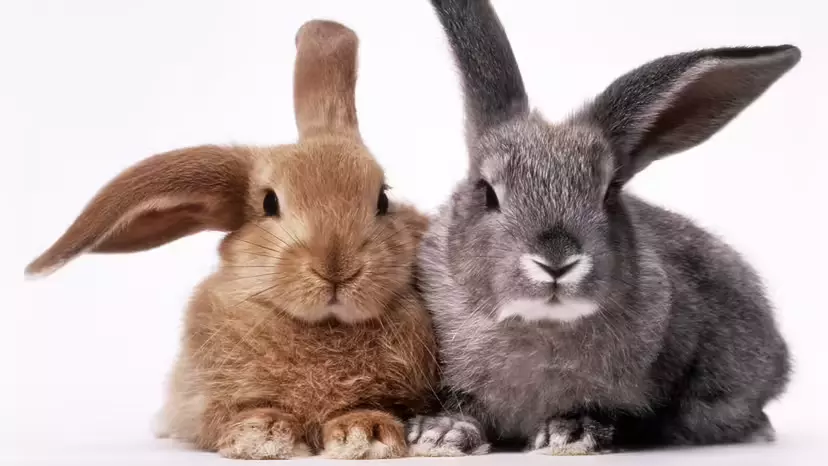Short answer: they’re the same animal. Bunny and rabbit both refer to members of the family Leporidae (specifically rabbits, not hares). The difference is tone and context—bunny is informal/endearing, while rabbit is the standard common name used in scientific, educational, and formal writing. Below, you’ll find clear guidance on usage, plus quick biology, pet care basics, and how rabbits differ from hares.

What Is a “Bunny”?
What Is a “Rabbit”?
10 Quick Facts About Rabbits (expanded)
Rabbit vs. Hare (how to tell them apart)
Rabbits as Pets: Care, Welfare & Common Myths
Bunnies & Rabbits in Culture and Language
FAQ: Terminology, biology, and everyday usage
Bunny originated as a colloquial pet name (likely from “bun”) and stuck because it captures the animal’s cute, playful image—especially young rabbits. In everyday speech (and marketing, children’s books, holiday lore), bunny signals warmth and affection. It’s perfectly fine to say “Easter Bunny,” “bunny rabbit,” or to refer to a baby rabbit as a bunny.
When to use it: casual conversation, children’s content, lifestyle/culture writing, captions, brand copy, or anytime you want an affectionate tone.
Rabbit is the standard common name for small, long-eared mammals in the family Leporidae outside the hare genus (Lepus). They’re known for soft fur, long ears, short tails, and hopping locomotion. Coat colors range from white and black to browns and creams; body size varies greatly—from the tiny pygmy rabbit (~20 cm; <0.5 kg) to the Flemish Giant (~76 cm; 6–7+ kg).
Rabbits are herbivores that graze on grasses and broadleaf plants. Many wild species live in burrows or dense cover; their keen hearing and powerful hind legs are key to predator avoidance. There are dozens of rabbit species worldwide (in both hemispheres), distinct from hares.
When to use it: science education, news, formal articles, species care guides, veterinary or policy contexts.

Social structure (warrens, not “herds”).
Wild European rabbits (Oryctolagus cuniculus) often live in warrens—interconnected burrow systems with social hierarchies that help reduce predation risk.
Prolific reproduction (with nuance).
Rabbits can breed quickly: gestation ~28–32 days; litters often 3–7 kits. Females (does) are induced ovulators. “Superfetation” is debated/rare in rabbits; what’s clear is postpartum estrus lets them conceive again soon after kindling.
Altricial young.
Kits (baby rabbits) are born blind, hairless, and dependent. Eyes open ~10 days; fur fills in ~2–3 weeks.
Crepuscular rhythms.
Many rabbits are most active at dawn and dusk, balancing feeding needs with predator avoidance.
Digestive superpower: cecotrophy.
To extract maximal nutrients from fibrous plants, rabbits produce cecotropes (nutrient-rich soft droppings) and re-ingest them directly—critical for B-vitamins, proteins, and overall gut health.
Teeth that never stop growing.
Incisors (and molars) are hypselodont (continuously growing). Constant chewing of hay/roughage prevents overgrowth and dental disease.
Ears as sensors & radiators.
Large ears enhance hearing and help dissipate heat (thermoregulation), especially in warm climates.
Adaptable across habitats.
From brush rabbits that prefer dense cover to cottontails in woodlands, species differ in ear length, body size, coat—adaptations to local ecology.
Fur types & textiles—ethics matter.
Rabbit pelage includes guard hairs and soft underfur (down). Breeds like Angora produce long fibers used in textiles; today, this raises welfare and sustainability questions—many consumers prefer certified humane or synthetic alternatives.
Global diversity, one domestication.
All domestic rabbits trace to the European rabbit (Oryctolagus cuniculus). Domestic breeds differ from wild North American cottontails (not native to domestication).
Although both are in Leporidae, hares (genus Lepus) are not rabbits.
Body & build: Hares are generally larger, with longer legs and ears (often with black tips), built for open terrain and high-speed sprints.
Fur: Hares have coarser coats that often seasonally change for camouflage; rabbits generally have softer fur with less dramatic seasonal shifts.
Nesting: Hares do not dig warrens; they rest in shallow depressions (forms). Rabbits often use burrows or dense cover.
Young: Leverets (baby hares) are born fully furred, eyes open, and mobile; kits (baby rabbits) are altricial (hairless, blind, dependent).
Sociality: Hares tend to be more solitary; many rabbits live in social groups.
Why they’re popular: social, curious, playful, and often bond closely with people. Selective breeding created a wide palette of sizes, coat types, and temperaments (e.g., Dutch, Mini Lop, Rex, Lionhead, Flemish Giant).
Core care checklist:
Diet first: Unlimited hay (timothy/orchard/grass hay) + measured leafy greens; limited pellets; few treats. Hay drives dental wear and gut motility.
Housing & movement: Safe indoor housing with ample floor space; daily free-roam/exercise; chew-safe enrichment; litter training is common.
Health care: Exotics-savvy veterinarian; monitor teeth, weight, appetite, poops; spay/neuter for health and behavior.
Companionship: Many rabbits thrive with a bonded partner; careful introductions are essential.
Welfare & ethics: Avoid impulse purchases; never release pet rabbits outdoors; consider adopting from shelters/rescues.
Myths to drop:
“Carrots are staple food.” → Treat only; too sugary.
“They’re low-maintenance.” → They need daily care, space, and vet access.
“Outdoor hutches are fine year-round.” → Predation, heat/cold stress, parasites—indoor housing is safer in most regions.
Rabbits/bunnies have long symbolized fertility, renewal, and cleverness.
Holidays & folklore: The Easter Bunny, springtime tales, Peter Cottontail.
Animation & media: Bugs Bunny and countless modern characters.
Language: “Bunny” signals affection; “rabbit” reads neutral/formal. Both are correct—choose based on audience and tone.
Q: Is a bunny a different species from a rabbit?
A: No. Bunny is a colloquial name for the same animal. Use rabbit for formal/scientific contexts.
Q: What’s a baby rabbit called?
A: Kit or kitten. In casual speech, bunny is also common.
Q: Are cottontails the same as domestic rabbits?
A: No. Domestic rabbits descend from the European rabbit; North American cottontails are different wild species.
Q: How do I quickly tell a hare from a rabbit?
A: Hares: bigger, longer legs/ears (often black-tipped), precocial young, open habitats, solitary. Rabbits: smaller, softer fur, burrowers, altricial young, more social.
Q: Which term should I use on my site?
A: Use “rabbit” for educational, veterinary, and care content; “bunny” for lifestyle, kids, and seasonal pieces. Many pages mix both to match SEO intent and reader tone.
animal tags: Bunny
We created this article in conjunction with AI technology, then made sure it was fact-checked and edited by a Animals Top editor.